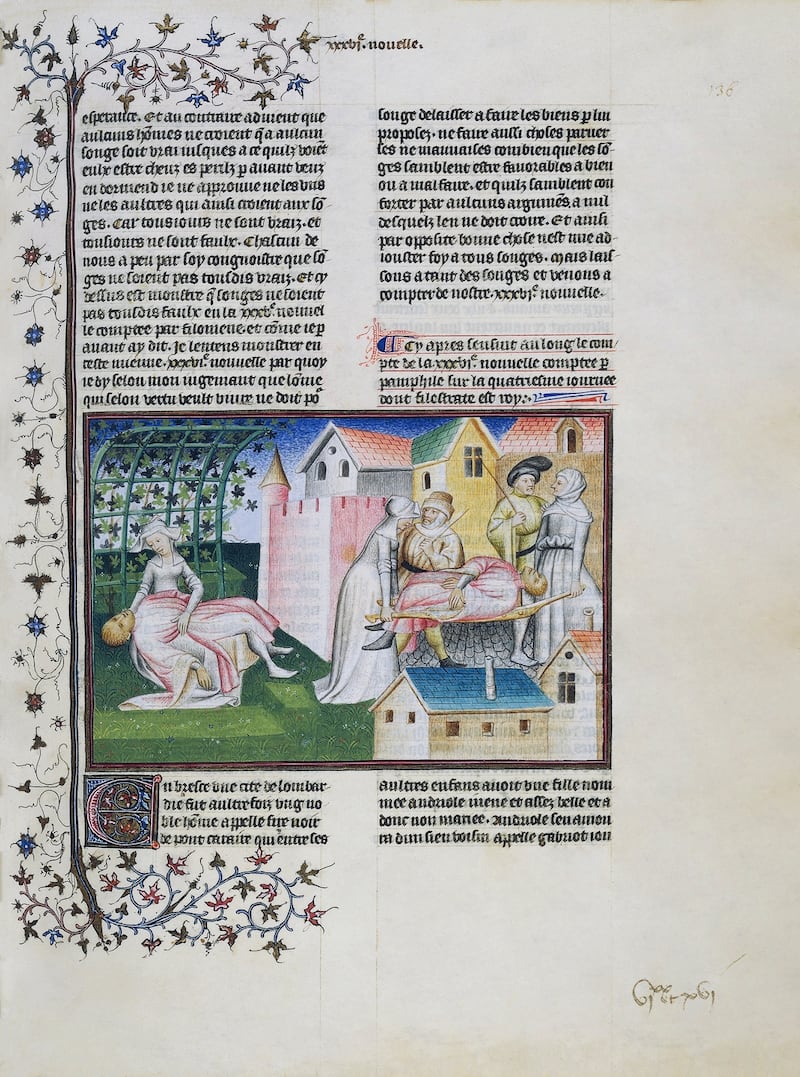This is one of the great plague narratives (the plague in question being the bubonic one, better known as the Black Death). In it, 10 Florentine aristocrats – seven women and three men – narrate 100 stories over 10 days to while away the time in a countryside villa to which they’ve fled to escape their plague-ravaged city. Storytelling offers them a break from the harsh reality and also reinforces the durability of life. Barry McCrea well described The Decameron (in The Ticket, May 16th, 2020) as “a strategy for psychic survival”.
Many of the stories, of randy nuns, conniving and corrupt clergy and all sorts of schemers and tricksters, are outrageously bawdy. But the evocations of the pleasures of the flesh are life-affirming in the face of all the surrounding death. Giovanni Boccaccio invented all sorts of cleverly euphemistic ways of describing sexual activity: “grinding at the mill”; “giving the wool a good whacking”; “making the nightingale sing”. The Decameron is “probably the dirtiest great book in the western canon,” according to one critic.
Most of the tales feature the merchant class (Boccaccio’s own) and the skill most important to them, which was “ingegno” – wit and the ability to think on your feet. Peronella’s story, told by Filostrato, is the one that probably best illustrates the skill of ingenuity.

The attitude to women in the book is ambiguous: they’re shown to be resourceful, candid, sometimes saucy, certainly not victims, but they’re also portrayed as “fickle, quarrelsome, suspicious, weak and fearful” – and that’s a female character describing them – and endlessly lustful. One of the most well known stories is the final one, that of “patient Griselda”, and what it seems to illustrate most of all is that wives should submit to their husbands and that husbands should control their wives.
One critic observed that the vitality of Boccaccio’s writing showed for the first time in prose the literary vigour of the Italian vernacular around 30 years after Dante had done the same for poetry by choosing to write The Divine Comedy in his native Tuscan dialect rather than in Latin.










